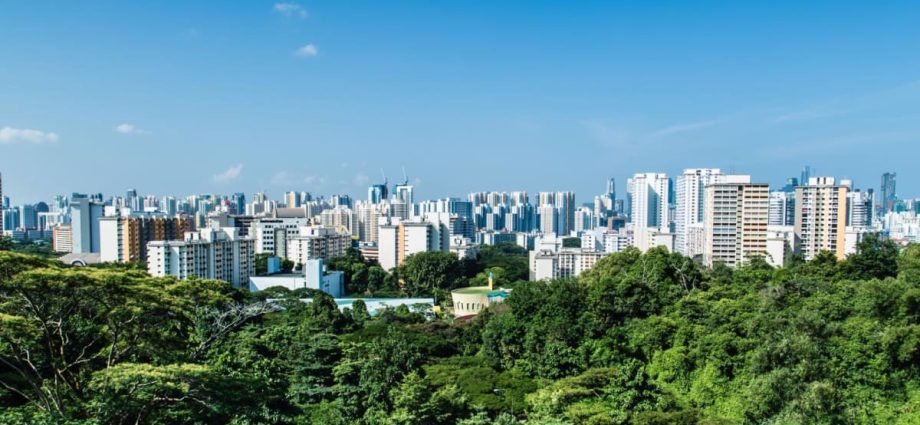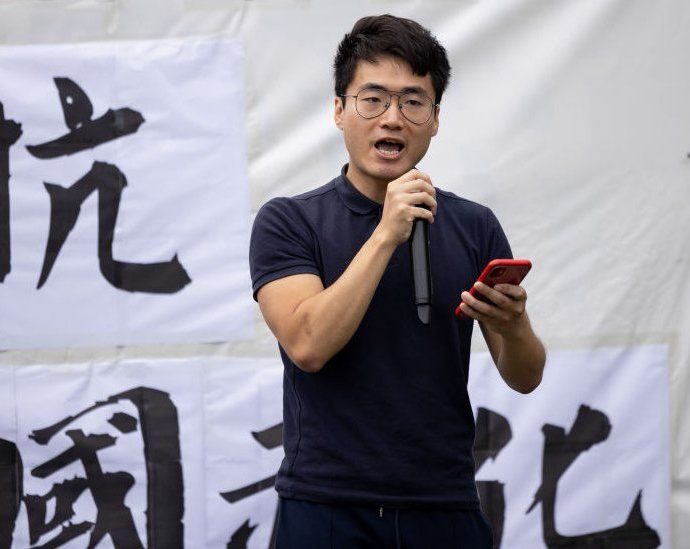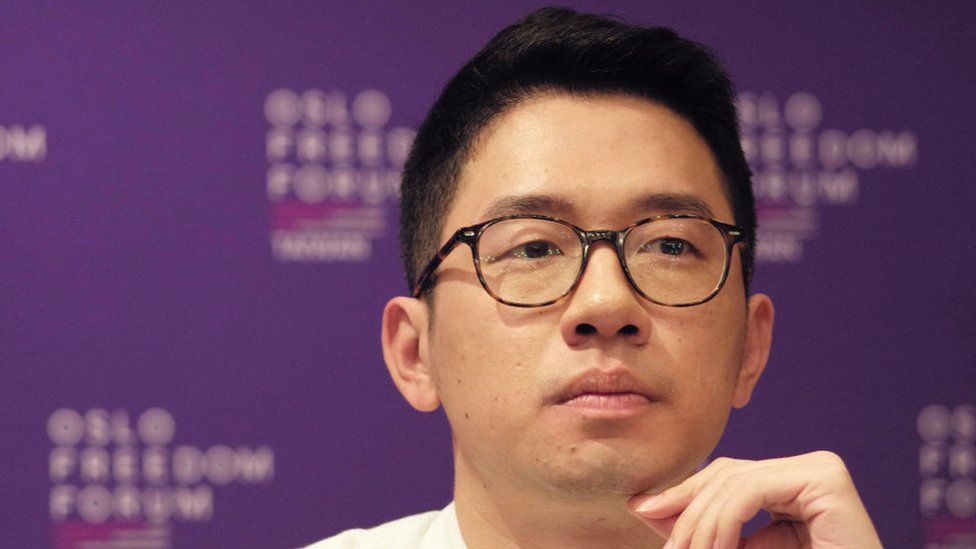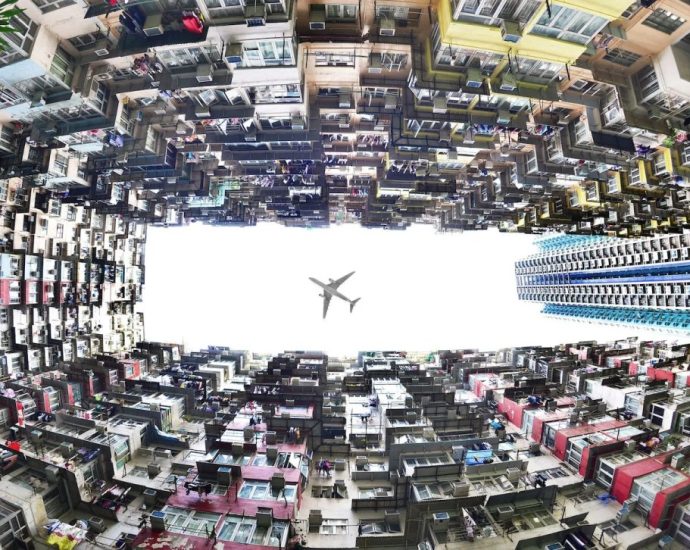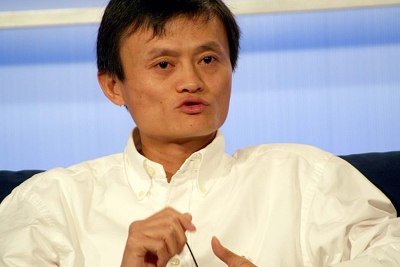Singapore’s public sector carbon emissions fall to 3.7 million tonnes in FY2022
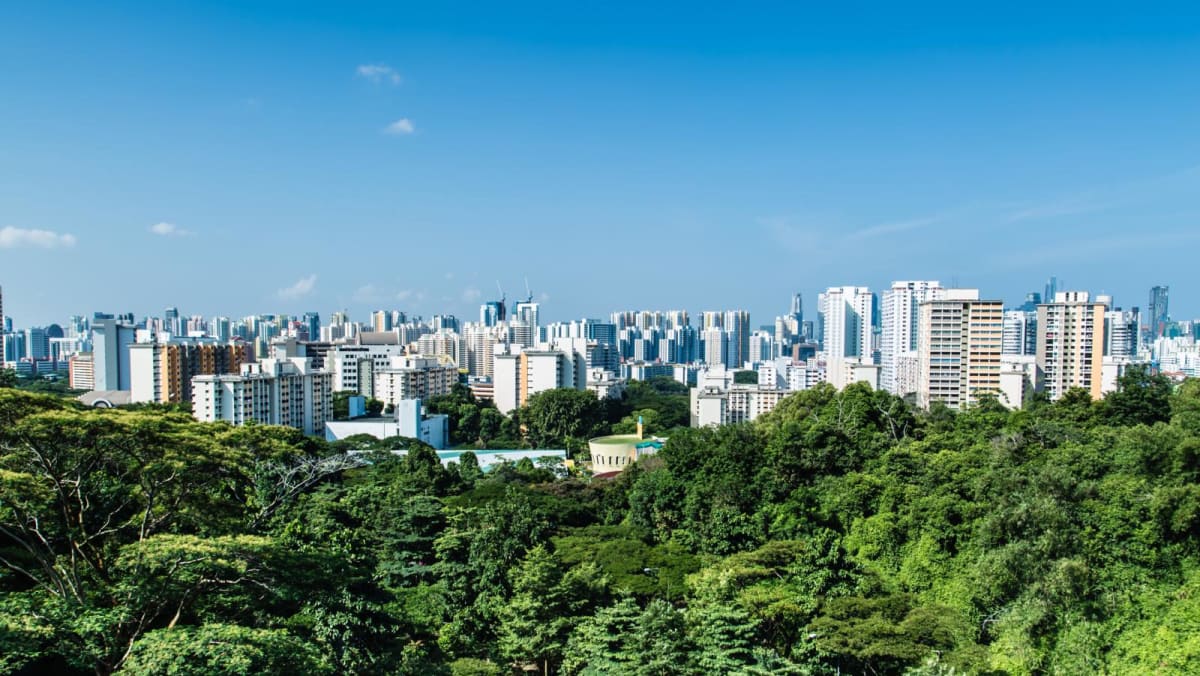
Public sector assets covered in the GreenGov.SG report include office buildings, healthcare facilities, schools, public utilities installations, public transport infrastructure and vehicles.
Officials looked at Scope 1 emissions, which are direct emissions from burning fossil fuels on site, and Scope 2 emissions, which are indirect emissions from using purchased electricity.
Apart from emissions, the data collected by the Ministry of Sustainability and the Environment (MSE) also captures electricity and water usage.
The public sector aims to cut 10 per cent from both its energy use and water consumption by 2030, from a baseline of average levels between 2018 and 2020.
But in FY2022, the energy utilisation index used to measure the target increased by 1.3 per cent. Overall electricity use hit about 5,600 gigawatt hours, rising 1.7 per cent.
The water efficiency index used to track that target was 0.8 per cent higher. Overall water use went up to 33 billion litres, up by 1.2 per cent .
MSE attributed the larger resource footprint to the reopening of the economy and new healthcare facilities.
Higher electricity use was also due to the expansion of the public transport network, while higher water use was associated with greater use of school sports facilities.
China police detain man suspected of leaking medical records of Hong Kong actress Kathy Chow a day after her death
The leak of Chow’s medical records caused outrage from large swathes of the mainland internet, who were furious about the leak, saying it “disrespected the privacy of the deceased”. Chow was born and raised in Hong Kong and launched her acting career as a trainee with local broadcaster TVB. She rose toContinue Reading
Hong Kong offers HK$1m bounties on five overseas activists
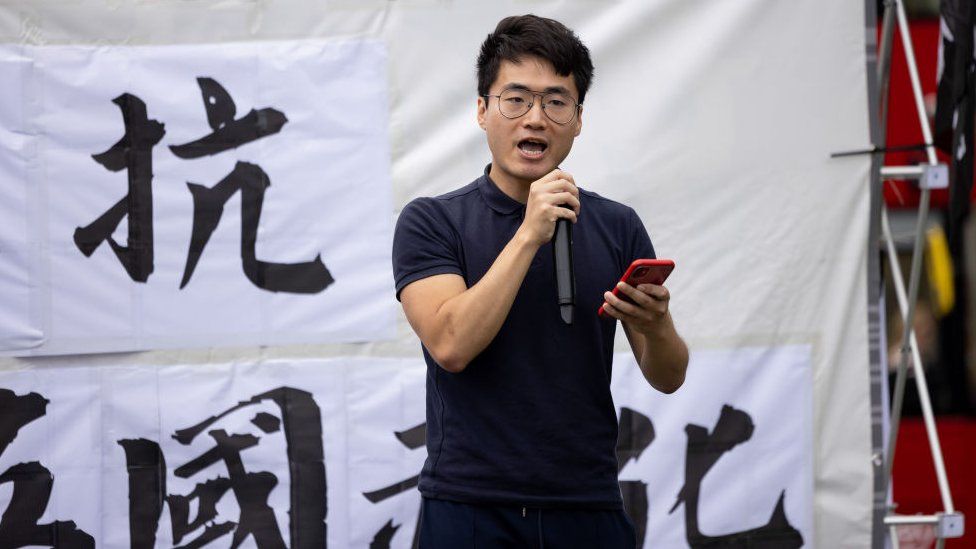 Getty Images
Getty ImagesHong Kong police have offered rewards of HK$1m (£100,400; $128,000) for information leading to the arrests of five pro-democracy activists.
They include Simon Cheng, a former UK consulate employee detained in 2019 in a high-profile case.
The others are Frances Hui, Joey Siu, Johnny Fok and Tony Choi. All are accused of violating the harsh National Security Law.
The move was condemned by the US and UK where several of the activists reside.
The five individuals have been accused of various offences including “inciting secession” and “colluding with foreign forces” to endanger national security.
“They sold their country and Hong Kong, and neglected Hongkongers’ interests,” National Security Department Chief Superintendent Li Kwai-wah said at a press conference. “The National Security Department will pursue them until the end.”
UK Foreign Secretary David Cameron has called the move “a threat to our democracy and fundamental human rights”.
Meanwhile US State Department spokesman Matthew Miller said “advocates for democracy and freedom will continue to enjoy their constitutionally guaranteed freedoms” in the US.
In July, Hong Kong announced similar bounties for eight other activists, sparking international criticism.
None of them have been arrested, though others accused of supporting them have been detained.
Related Topics
-
-
20 November 2019
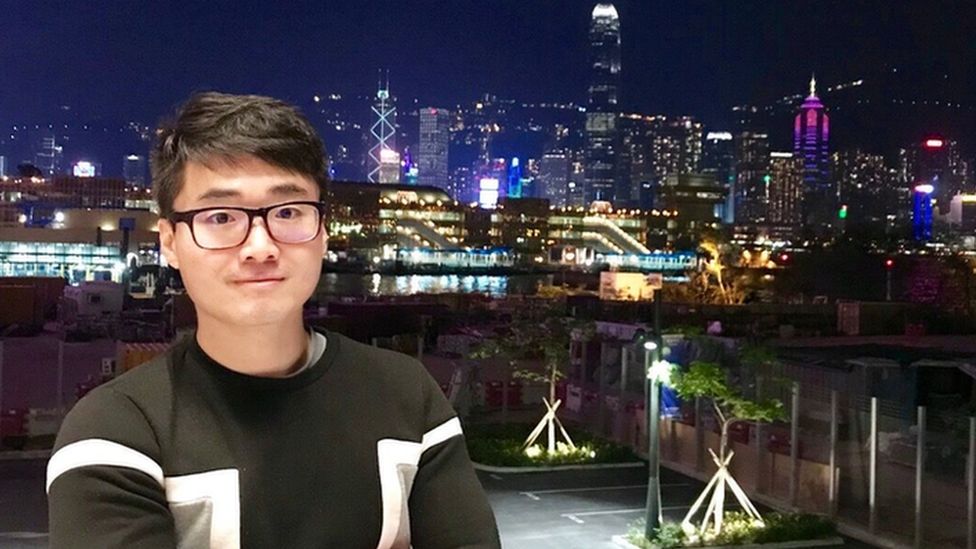
-
Africans in China are Noo Saro-Wiwaâs Black Ghosts
Noo Saro-Wiwa is a celebrated Nigerian-born travel writer. Her latest book is Black Ghosts. It explores, with candor and compassion, the lives of several African economic migrants living in China – a group of people who are key to trade between the continents. As a scholar of African travel writing and mobility, among other fields, I read the book with keen interest and then asked Saro-Wiwa more about it.
Janet Remmington: Let’s start with the title: Black Ghosts. And the subtitle which outlines your focus: “a journey into the lives of Africans in China.” In your opening chapter, you introduce the reader to the concept of the “black ghost,” which carries connotations of a negated, disdained or uneasy presence. This term even gets translated as “black devil” by users on WeChat, China’s version of the social media platform WhatsApp. It makes for a disturbing introduction to Africans in China. But, as we read on, the reality is far more complex than the implied disavowal and racism. What have you been motivated to investigate through this travel book?
Noo Saro-Wiwa: I remember being amazed to hear that there was a sizeable African community in China. It’s not a country I associate culturally with Africa. I wanted to see how Africans fit into a society that is known for its unprogressive views on race. Black people in countries like Brazil, the US and, to a lesser extent, the UK have always held currency in the cultural sphere despite our economic marginalization. But in China we don’t have such purchase; therefore I was curious to see how they navigate that society.

JR: Your new book heads off in a very different direction from your 2013 award-winning debut Looking for Transwonderland in which you traverse Nigeria, the land of your birth, as we discussed in a wide-ranging interview. Before Black Ghosts, you had mainly visited places around the “Atlantic rim,” you say, where connections were “woven by history and colonialism.” For you, China offered no such familiar, if ambivalent, touchpoints. What did this mean for the writing of your new book?
NS-W: Despite globalization and mass travel, China holds a faint mystique – it’s not visited quite as often as other countries in the region. The language, written and oral, is difficult and in some ways impenetrable. It made me an outsider in the fullest sense, feeling my way around the very edges of that society. My observations were those of someone on the steepest learning curve with no historical or personal attachment to the place. However, my exploration wasn’t so much of China but of the Africans living in Guangzhou and Hong Kong.
JR: In Black Ghosts, you take your reader for an eye-opening ride through diverse parts of China. You seek out African migrants and find a lot of variety – more than you expected. Can you elaborate on your journey into the lives of Africans in China?
NS-W: There was a different vibe. Far fewer of the insouciant idlers on the street that you get back on the home continent. People were busy, evasive initially. I met traders who were there on short regular visits, buying goods to export back to Africa. I chatted with visa overstayers – people who had come as traders but, through various misfortunes, were stuck in the country in limbo.
Then there were highly skilled people, such as the cardiac surgeon or the former mixed martial arts champion who was now a promoter of the sport. He was one of numerous Africans who have Chinese partners. China worked out for him and he led a comfortable life there, but others had more ambivalent attitudes towards the country.

The author. Courtesy Noo Saro-Wiwa
JR: In exploring African experiences in China, you reflect on the influence of class, gender and sexuality in addition to race. How do you understand the interplay of these factors in relation to travelling and considerations of settling?
NS-W: Migration is somewhat easier for men. Their slower biological clocks give them more time to try and make it in China, and they can make complex domestic arrangements to suit their needs. For example, in Hong Kong I met a man who had wives in both countries (something Chinese men in Africa also do). Intermarriage sometimes occurs between African men and Chinese women who originate from the countryside. As migrants to the city, they too are outsiders of sorts, sometimes with limited rights. Marrying African men sometimes gives them a foothold in the economy.
Class also played a role, for example when it comes to teaching English. Africans with fewer educational qualifications were paid less to teach English. One Kenyan woman I met had to pretend she was American in order to secure a teaching job with decent pay. But when it comes to sexuality, China offers certain freedoms – I saw gay African guys who clearly moved around there in a way that they would not back at home in Nigeria, where same-sex relations are criminalized.
If you told people in the 1300s that Africans would one day populate the Caribbean, and that Europeans would displace native Americans or that Indians would form half the population of Fiji, people would never have believed it. African neighborhoods in China was not a concept I would’ve envisaged in my childhood.
Migration is unpredictable like that. You never know what the future might bring. Future changes in the economy, the environment, and in China’s demographic makeup could create all sorts of movements of people. With China becoming more exposed to foreigners in ways that challenge citizens’ beliefs and create affinities, could this influence future directions? It could have some bearing on cultural creativity or investment decisions one day.
Janet Remmington is a research associate with the Humanities Research Center of the University of York and the African Literature Department of the University of the Witwatersrand.
This article is republished from The Conversation under a Creative Commons license. Read the original article.
A looming American failure in Ukraine?

Subscribe now for a Special Holiday Price of only $49/year instead of $249, valid until February 17
Quantitative and qualitative polarization trends
David Woo and David Goldman take stock of polarization trends across economic, market, and political arenas, noting the prospect of a stark strategic reversal for Washington in Ukraine with consequences for its prestige far greater than its failures in Afghanistan or Iraq.
Military conflict risks: Israel to take matters into its own hands?
David Woo analyses the results of the RIWI-Unbound Military Conflict survey and considers whether Israel will act against the Houthi attacks on Israel-bound ships if no one else will a day after a Houthi missile hit a Norwegian tanker en route to Israel.
Investment themes in a polarizing world
David Woo and Scott Foster examine various investment options linked to OPEC+ unity and Russia’s commitment to putting a floor under the oil price, reserve diversification from US Treasuries, onshoring, electric vehicles, semiconductors, and more.
No Ukraine enthusiasm among the European peoples
Diego Faßnacht writes that there is little enthusiasm for aiding Ukraine and admitting it to the European Union left among Europeans after 22 months of war. the low level of support for Ukraine’s accession to the EU is likely to slow down the process of its admittance.
Putin’s electoral plans for Ukraine coming into view
James Davis writes that Russian President Vladimir Putin’s declaration that he will seek the presidency in 2024 frames the election as a referendum on the need for Putin to finish the job in Ukraine and complete the task of safeguarding Russia’s position in the world.
Is coffee without coffee beans still coffee? We tried this new made-in-Singapore alternative from upcycled food waste

While other bean-free coffee producers in the world use ingredients like chickpeas, rice hulls and seeds to make their product, Prefer’s founders wanted to upcycle food waste products found locally, in line with the whole point of bean-free coffee, which is sustainability, Tan told us.
To that end, they use soya pulp discard from local soya milk chain Mr Bean, day-old bread from Gardenia bakery and spent grains that are a byproduct of beer-making from local breweries.
These are fermented, then roasted, and finally ground up.
Consumers and partnering cafes receive the product in a form that looks like ground coffee and can be extracted using the usual methods. The point was for baristas to have to deviate as little as possible from their procedure, Tan said.
The bean-free coffee does not contain caffeine, but if you really, really need it, you can choose to add caffeine powder to your drink, he added.
As a food scientist who has conducted countless fermentation experiments, Tan studied flavour molecules in order to replicate the taste of coffee as closely as possible. It is an ongoing work-in-progress and a labour of love for the 31-year-old coffee aficionado.
One Holland Village: A guide to pet-friendly eateries and new dining concepts

Pets are allowed in the outdoor seating area, #03-01 to 04.
5. Fireplace by Bedrock
It seems the big boys are staking their claim at One Holland Village, with the award-winning steakhouse Bedrock introducing Fireplace – a brand new concept that remains committed to the brand’s trifecta of earth, food, and fire.
The restaurant’s piece de resistance is an open wood fire, imparting a smoky essence to the tantalising meats, fish, and fresh seasonal produce. Frankly, it feels a tad unfair to parade a half suckling pig before your little carnivore in tow. Brace yourself for a guilt trip while you pig out!
Pets are allowed in the outdoor seating area, #03-27/28.
On top of this handful, two other pet-friendly options cater more to on-the-go experiences than leisurely dining. Paris Baguette provides a pet-friendly bench outdoors, though without a table. Meanwhile, Caffeine Xpress, previously located beside the iconic Thambi Magazine Store on Holland Avenue, has got a brand new look as a takeaway kiosk.
Bikepacking in Jeju Island: How my four-day cycling trip helped me with the loss of my mother

In the months before my mother passed away from terminal illness in 2021, my bicycle became an unlikely companion. Plugged into a playlist of thumping tunes, I would lose myself in the rhythm of the ride, each pedal stroke taking me further away from the overwhelming demands of caregiving and the palpable sense of impending loss.
At her funeral, my uncle revealed that my mum had confessed to feeling guilty about being a constant burden to my father and me, and that she found solace in knowing that my new cycling hobby gave me a breath of freedom.
This knowledge left me torn. I stopped cycling for a while, weighed down by my guilt at realising that she had always sensed my need for a respite from my responsibilities – and, indirectly, from her – yet never held it against me.
When I later resumed riding occasionally, I never again experienced that feeling of liberation I used to have – until I went on an impromptu bikepacking trip around Jeju Island, South Korea, in September this year.
THE ROAD TO (SELF) FORGIVENESS
With mostly flat terrain, gentle slopes and a manageable distance, Jeju Island is the perfect launchpad for bikepacking newbies who may not be accustomed to long rides and challenging climbs, said my more experienced travel buddy, who once did a solo bikepacking trip in Taiwan.
People left dangling as rollercoaster stops mid-ride

People were left dangling upside down in mid-air after a rollercoaster came to an emergency stop in Japan.
Thirty two people were on the Flying Dinosaur ride at Universal Studios Japan, in Osaka, when it came to an emergency stop.
The ride reaches heights of 150ft (46m) as people are “swung 360 degrees through the world of Jurassic Park”, the park’s website reads.
The park operator said the rollercoaster stopped at one of its highest points on Thursday morning, Japanese broadcaster NHK reported.
Workers then led the riders to safety via an emergency staircase and no one was reported to be injured. The ride resumed after safety check.
The ride automatically stops if sensors installed on the attraction detect an abnormality, the operator said, but the the cause of the stop is still unknown.
Belt and Road Initiative enters second decade
China currently faces daunting challenges in its domestic economy. But weakness in the real estate market and consumer spending at home is unlikely to stem its rising influence abroad.
In mid-October 2023, China celebrated the 10-year anniversary of its Belt and Road Initiative. Belt and Road seeks to connect China with countries around the world via land and maritime networks, with the aim of improving regional integration, increasing trade and stimulating economic growth. Through the expansion of Belt and Road, China also sought to extend its global influence, especially in developing regions.
During its first decade, the initiative has faced a barrage of criticism from the West, mainly for saddling countries with debt, inattention to environmental impact, and corruption.
It has also encountered unexpected challenges – notably the COVID-19 pandemic, which led to massive supply chain issues and restrictions on the movement of Chinese workers overseas. Yet, as the initiative heads into its second decade, global economic trends suggest it will continue to play an important role in spreading Chinese influence.
I’m an associate professor of global studies at the Chinese University of Hong Kong, Shenzhen, where I teach about business-government relations in emerging economies. In my new book, China’s Chance to Lead, I discuss which countries have already sought out and are now most likely to seek out and benefit from Chinese spending.
Understanding this helps explain why China and the Belt and Road Initiative are poised to benefit greatly from the global economy over the next several decades.
Malaysia’s unlikely prominence
In October 2013, China President Xi Jinping announced the launch of the maritime portion of the Belt and Road during a speech in Jakarta. At the time, Indonesia appeared to be an ideal candidate for Chinese infrastructure spending, yet it was Malaysia – surprisingly – that emerged as a far more avid participant.
In comparison with Malaysia, Indonesia’s economy was three times larger and its population nearly nine times bigger, yet its gross domestic product per capita was only one-third as high. Indonesia also had enormous potential to increase its already substantial natural resources exports to China. Taken together, these factors point to Indonesia’s far greater demand for infrastructure that would aid its economic development.
Furthermore, Indonesia’s democratic institutions were more conducive to attracting foreign investment. Its checks and balances enhanced policy stability and reduced political risk. By contrast, Malaysia’s government, which was dominated by a single ruling party coalition, lacked comparable checks and balances.
Despite Indonesia’s numerous advantages, Malaysia attracted a far larger volume of BRI spending during its first several years. Data provided by the China Global Investment Tracker indicates the value of newly announced infrastructure projects in Malaysia surged from US$3.5 billion in 2012 to over $8.6 billion in 2016. Spending in Indonesia, meanwhile, rose modestly from $3.75 billion to $3.77 billion over the same period.
Malaysia also enthusiastically participated in the Digital Silk Road, or DSR, launched in 2015. The DSR is the technological dimension of the Belt and Road that aims to improve digital connectivity in participant countries. Malaysia’s then-Prime Minister Najib Razak engaged Jack Ma, the co-founder of Chinese tech giant Alibaba, as an adviser to develop e-commerce in 2016. This led to the creation in 2017 of a Digital Free Trade Zone, an international e-commerce logistics hub next to the Kuala Lumpur International Airport.

With this foundation in place, Malaysia’s capital went on to become the first city outside China to adopt Alibaba’s City Brain smart city solution in January 2018. City Brain uses the wealth of urban data to effectively allocate public resources, improve social governance and promote sustainable urban development. Dubai and other cities in the Middle East followed.
Digital Silk Road projects in Indonesia during that period were far fewer, slower and less ambitious. They primarily involved the expansion of Chinese smartphone and e-commerce firms in Indonesia.
What accounts for these contrasting responses? The short answer: their political regimes. And understanding that could be key to the global spread of Chinese influence in the coming years.
State-owned business and clientelism
In the lead-up to the May 2018 election, Malaysia’s ruling party and its allies worried they could lose power after six decades of rule. Desperate to bolster support, Najib quickly identified numerous infrastructure megaprojects in which Chinese state-owned businesses could partner with Malaysian counterparts.
Indonesia, by contrast, placed far greater emphasis on projects led by private business. For example, the Indonesia Morowali Industrial Park, “the world’s epicenter for nickel production,” is one of the largest Chinese investments in Indonesia and a joint venture between private Chinese and Indonesian companies.
As I discuss in my book, when rulers in autocracies with semi-competitive elections, like Malaysia’s, have a weak hold on power, their desire for Chinese spending is amplified. This relates to clientelism, or the delivery of goods and services in exchange for political support.
A higher level of state control in autocracies grants political leaders greater influence over the allocation of clientelist benefits, which aids leaders’ reelection efforts.
Economic trends that will benefit China
Even if China’s future growth is lower than the pre-pandemic period, these four features of the global economy are poised to benefit China and the Belt and Road Initiative over the next several decades.
1. Global rise of autocracies
Over 60% of developing countries are autocratic, according to data provided by the Varieties of Democracy Project. This represented 72% of the global population in 2022, up from 46% in 2012.
For decades, the World Bank and affiliated regional development banks were the only game in town for development financing to low- and middle-income countries. Consequently, these global lenders could demand liberalizing reforms that were sometimes contrary to the interests of incumbent rulers, especially autocrats.
China’s rise has created an attractive alternative for autocratic regimes, especially since it does not impose the same kinds of conditions that often require loosening state controls on the corporate sector and reducing clientelism. Between 2014 and 2019, I find that 77% of total BRI spending on construction projects went to autocracies, and primarily to those with semi-competitive elections.
2. Demand for Chinese infrastructure spending
The economies of developing countries have grown more than twice as quickly as advanced economies since 2000 and are projected to outpace advanced economies in the decades ahead. On the eve of the Soviet Union’s dissolution in 1991, developing economies accounted for 37% of global GDP; by 2030, the International Monetary Fund projects they will account for around 63%.
At the same time, the global infrastructure financing gap – that is, the money needed to build and upgrade existing infrastructure – is estimated to be around $15 trillion by 2040. To fill this gap, the world must spend just under $1 trillion more than the previous year up through 2040, with most of this spending directed toward low-income economies.
Because many of these fast-growing, low-income countries are predominantly semicompetitive autocracies, China is well-positioned to expand its global influence via the Belt and Road Initiative.
3. Emerging tech
The advent of what is known as Industry 4.0 technologies, such as artificial intelligence, big data analytics and blockchain, could enable developing countries to leapfrog stages of development.
By creating new technical standards to be used in these emerging digital technologies, China aims to lock in Chinese digital products and services and lock out non-Chinese competitors wherever its standards are adopted.

In Tanzania, for example, the Chinese company contracted to deploy the national ICT broadband network constructed it to be compatible only with routers made by Chinese firm Huawei.
Incorporating digital technologies into hard infrastructure projects – digital traffic sensors on roads, for example – presents more opportunities for China to use the Belt and Road Initiative to promote adoption of its technologies and standards globally.
4. Urbanization
Finally, the developing world’s urban population is expected to rise from 35% in 1990 to 65% by 2050. The biggest increases will likely occur in the semi-competitive autocracies of Africa. A desire for sustainable urbanization will increase the demand for infrastructure that incorporates digital technologies – once again amplifying the opportunity for China and the BRI.
Understanding what drives the demand for the Belt and Road Initiative, and the trends that will propel it into the future, is vital for the West to devise an effective strategy that counters China’s rising global influence.
Richard Carney, Associate professor of global studies, Chinese University of Hong Kong, Shenzhen
This article is republished from The Conversation under a Creative Commons license. Read the original article.

